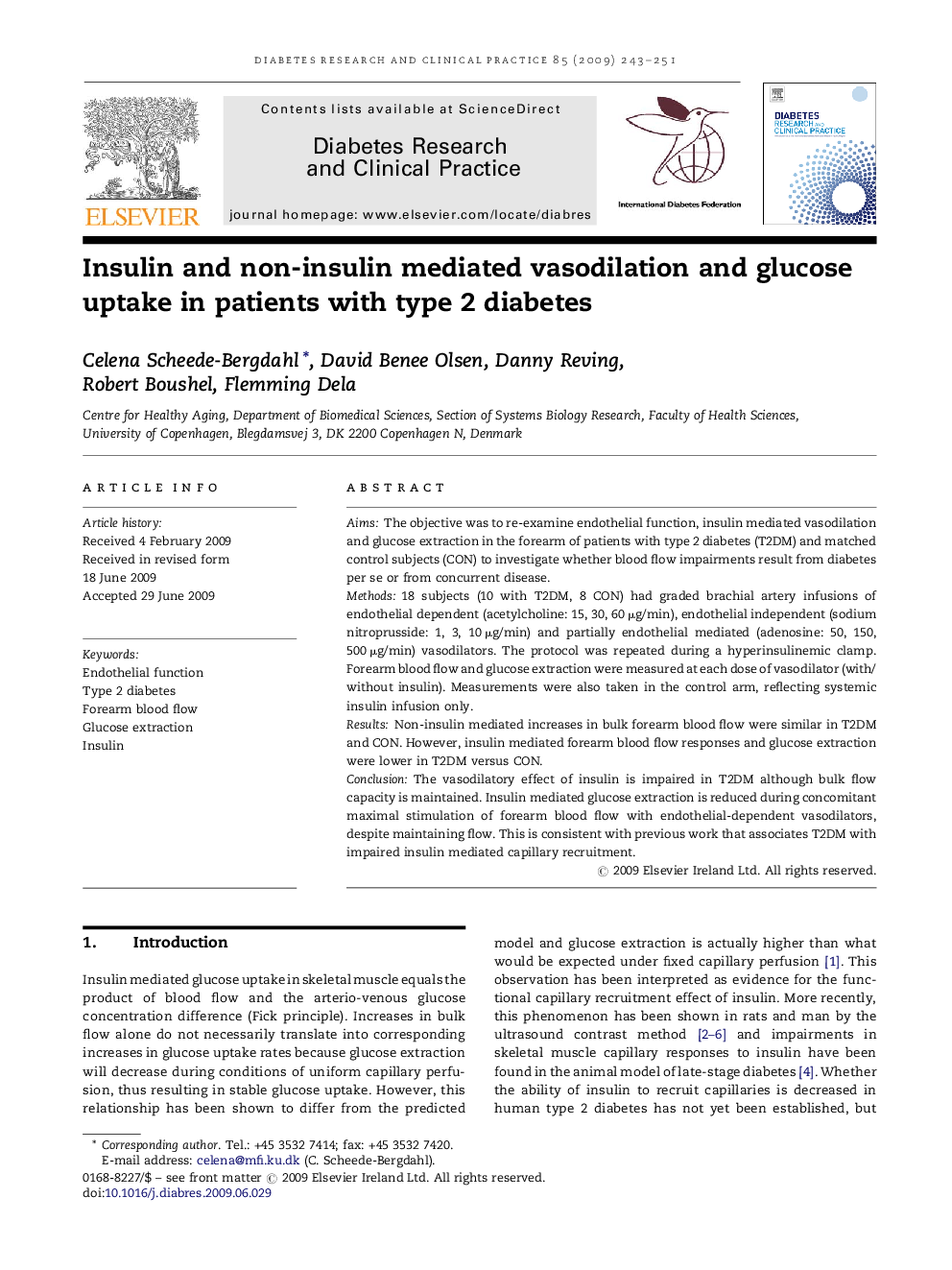| Article ID | Journal | Published Year | Pages | File Type |
|---|---|---|---|---|
| 2797689 | Diabetes Research and Clinical Practice | 2009 | 9 Pages |
AimsThe objective was to re-examine endothelial function, insulin mediated vasodilation and glucose extraction in the forearm of patients with type 2 diabetes (T2DM) and matched control subjects (CON) to investigate whether blood flow impairments result from diabetes per se or from concurrent disease.Methods18 subjects (10 with T2DM, 8 CON) had graded brachial artery infusions of endothelial dependent (acetylcholine: 15, 30, 60 μg/min), endothelial independent (sodium nitroprusside: 1, 3, 10 μg/min) and partially endothelial mediated (adenosine: 50, 150, 500 μg/min) vasodilators. The protocol was repeated during a hyperinsulinemic clamp. Forearm blood flow and glucose extraction were measured at each dose of vasodilator (with/without insulin). Measurements were also taken in the control arm, reflecting systemic insulin infusion only.ResultsNon-insulin mediated increases in bulk forearm blood flow were similar in T2DM and CON. However, insulin mediated forearm blood flow responses and glucose extraction were lower in T2DM versus CON.ConclusionThe vasodilatory effect of insulin is impaired in T2DM although bulk flow capacity is maintained. Insulin mediated glucose extraction is reduced during concomitant maximal stimulation of forearm blood flow with endothelial-dependent vasodilators, despite maintaining flow. This is consistent with previous work that associates T2DM with impaired insulin mediated capillary recruitment.
